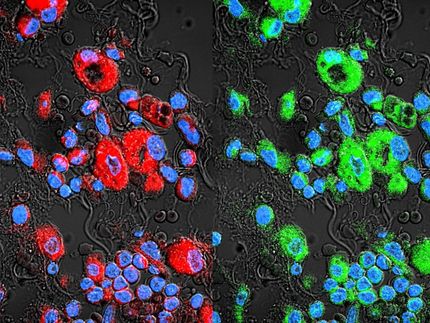Cellular recycling complexes may hold key to chemotherapy resistance
Advertisement
Altering the protein recycling complexes in human cells, including cancer cells, allows the cells to resist treatment with a class of drugs known as proteasome inhibitors, according to Whitehead Institute scientists.
"This is why some cancers can be so difficult to treat with chemotherapy, because the cells can be in different states--some sensitive to treatment and some resistant to treatment, all in the same tumor," says Sandro Santagata, a former visiting scientist in the lab of Whitehead Member Susan Lindquist. Santagata is now Assistant Professor of Pathology at Brigham and Women's Hospital and Harvard Medical School.
The key to this treatment resistance lies in the proteasome, a highly regulated complex in the cell that degrades excess and misfolded proteins. The main type of proteasome in humans is the 26S proteasome, which is composed of a catalytic barrel (the 20S core complex) with lids on either end (19S regulatory complex). The 19S complex recognizes proteins tagged for degradation, unfolds them, and feeds them into the 20S complex, where they are broken down into peptides to be recycled into new proteins.
Regulating and removing proteins is vital for all cells, but cancer cells are highly dependent on their protein production machinery to fuel their proliferation. The chemotherapy drug bortezomib (marketed by Millennium Pharmaceuticals under the brand name Velcade) takes advantage of this reliance and targets the proteasome's function. In certain blood cancers, including myeloma and mantle cell lymphoma, bortezomib is very effective, at least initially. Yet most cancers maintain a pre-existing resistance to such proteasome inhibitors.
To understand how cancer cells could have an established tolerance, Santagata and Peter Tsvetkov, a postdoctoral researcher in the Lindquist lab, analyzed the genes that allow cells to survive exposure to proteasome inhibitors at toxic levels. According to their work, resistance is conferred by a reduction in the 19S complex's expression. This alters the ratio of the 26S proteasome to an alternative proteasome composed solely of a 20S complex.
"We think this may be a fitness tradeoff mechanism in tumors that enables these cells to proliferate in normal conditions a bit more slowly, but when they encounter a concentration of proteasome inhibitors that would be toxic to the rest of the cancer cells, these cells are able to survive," says Tsvetkov.
According to Tsvetkov, normal cells may use this mechanism to deal with naturally occurring protein stresses, including protein aggregation. He explains that cells could potentially lower their 19S subunit levels through a wide variety of epigenetic mechanisms, including microRNAs, transcription regulation, and histone modifications.
Original publication
Peter Tsvetkov, Marc L Mendillo, Jinghui Zhao, Jan E Carette, Parker H Merrill, Domagoj Cikes, Malini Varadarajan, Ferdy R van Diemen, Josef M Penninger, Alfred L Goldberg, Thijn R Brummelkamp, Sandro Santagata, Susan Lindquist; "Compromising the 19S proteasome complex protects cells from reduced flux through the proteasome"; eLife; 2015

























































